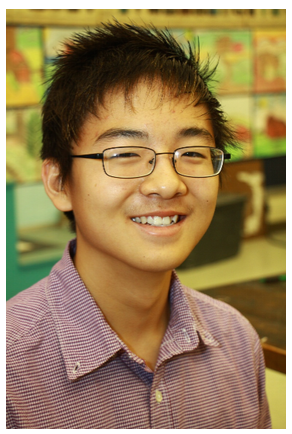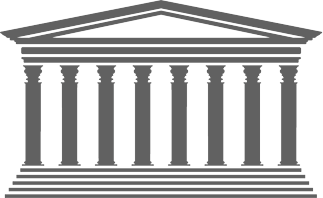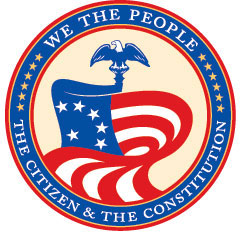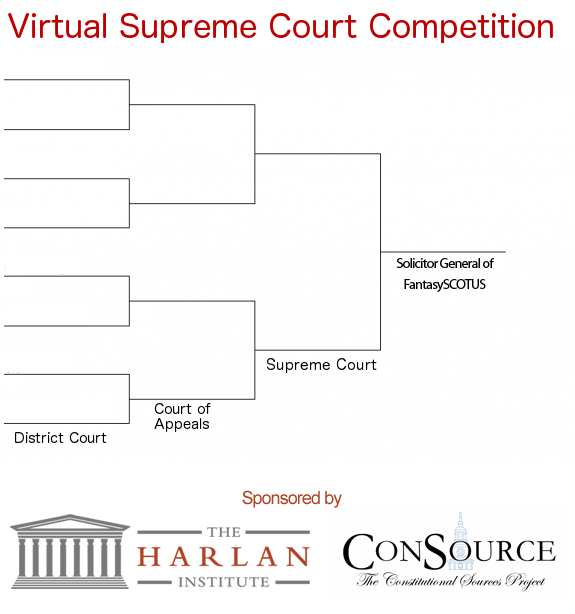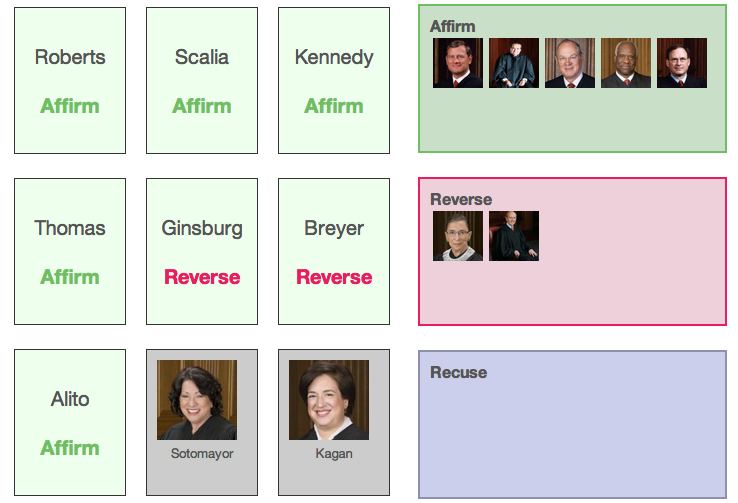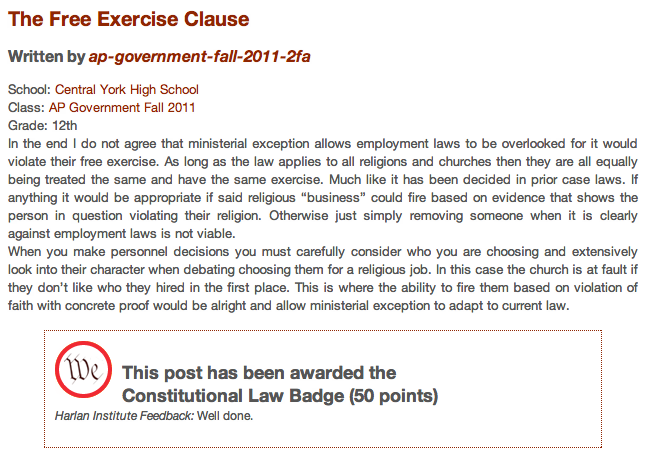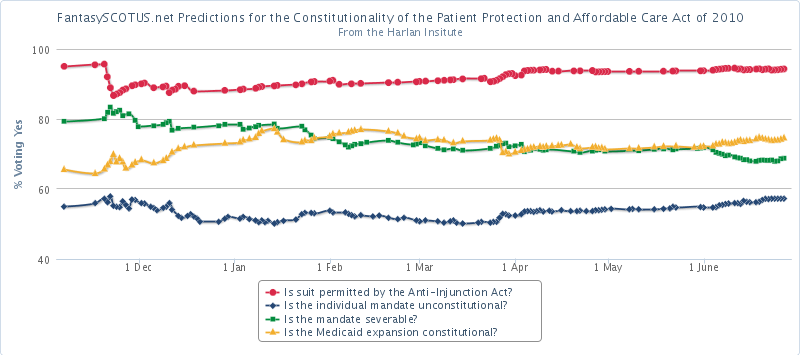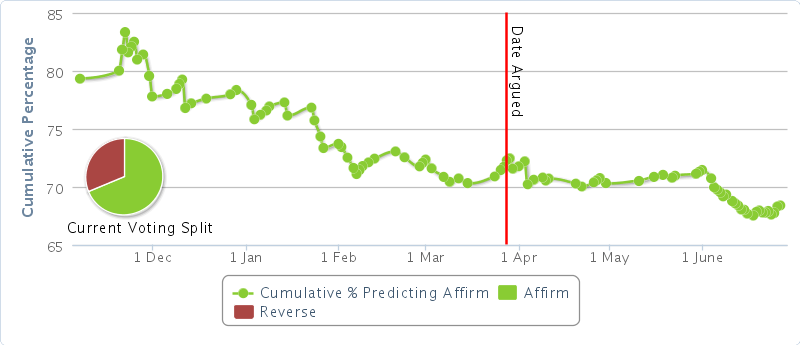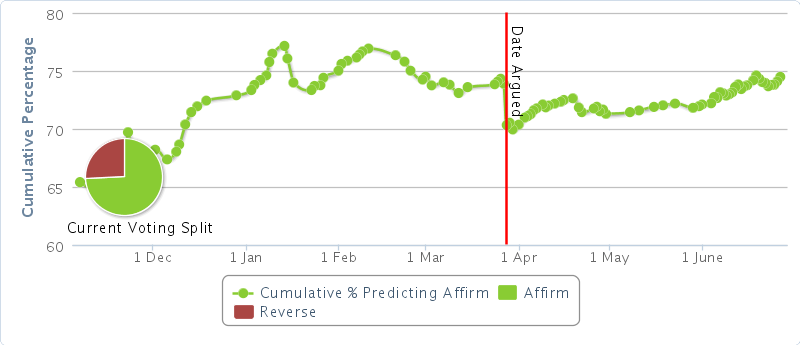Congratulations to the Winners of the Harlan Institute-ConSource Virtual Supreme Court Competition
June 3, 2014 We received over 100 excellent submissions from high school students across the country. We were able to narrow down our brackets to four teams. Each team participated in oral arguments over Google+ Hangouts. Our engaged judges asked the students tough and challenging questions, and they had to think on their feet. In the end, we were extremely impressed with all of the winners.
Here are the final standings of the teams:
We received over 100 excellent submissions from high school students across the country. We were able to narrow down our brackets to four teams. Each team participated in oral arguments over Google+ Hangouts. Our engaged judges asked the students tough and challenging questions, and they had to think on their feet. In the end, we were extremely impressed with all of the winners.
Here are the final standings of the teams:
- Grand Prize - Michelle McEvoy and Uma Chatterjee, Frisco CTE, Frisco, TX. Here is their brief supporting the Respondent. Michelle and Uma won a free trip to Washington, D.C. to attend ConSource's 2014 Constitution Day celebration.
- Second Prize - Dante Barnes and Peter Kim, Wicomico HS, Wicomico, MD. Here is their brief supporting the Petitioner. Dante and Peter each won an iPad.
- Third Prize - Luke Segovia and Jacob Shaw, Del Valle HS, Del Valle, HS. Here is their brief supporting the Petitioner. Luke and Jacob each won a $100 Amazon Gift Card.
- Honorable Mention - Jennifer Gomez and Jason Cano, Del Valle HS, Del Valle, HS. Here is their brief supporting the Respondent.
 Congratulations to all the students. Also, congratulations to their excellent teachers. Ben Ewald at Frisco CTE, Christina Murray at Wicomico High School, and Michael Cunningham at Del Valle HS. We are so proud of these educators who inspire their students to accomplish great things.
Also, we extend our deepest thanks to our excellent judges who graciously volunteered their time to help judge the competition: Bryan Gividen, Timothy Huffstutter, Carl Cecere, and Lawrence Dietz. And always, my deepest thanks to my colleague and friend, Julie Silverbrook, the Executive Director of Consource for her tireless work in promoting constitutional education.
If you like our programs, please consider supporting the Harlan Institute and ConSource. We offer all of these programs to students at no cost, and rely on generation donations to cover our costs, and the students' prizes.
Congratulations to all the students. Also, congratulations to their excellent teachers. Ben Ewald at Frisco CTE, Christina Murray at Wicomico High School, and Michael Cunningham at Del Valle HS. We are so proud of these educators who inspire their students to accomplish great things.
Also, we extend our deepest thanks to our excellent judges who graciously volunteered their time to help judge the competition: Bryan Gividen, Timothy Huffstutter, Carl Cecere, and Lawrence Dietz. And always, my deepest thanks to my colleague and friend, Julie Silverbrook, the Executive Director of Consource for her tireless work in promoting constitutional education.
If you like our programs, please consider supporting the Harlan Institute and ConSource. We offer all of these programs to students at no cost, and rely on generation donations to cover our costs, and the students' prizes.
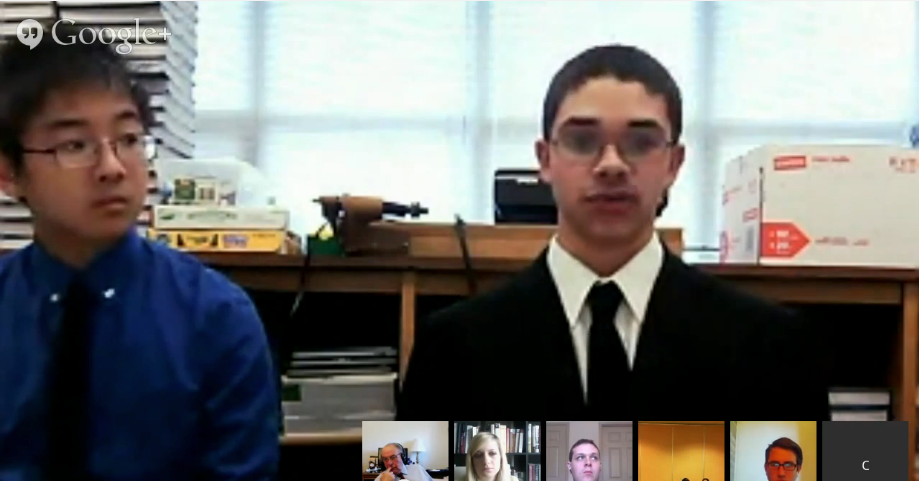 You can watch the video of the semifinals, involving the teams from Wicomoco, Del Valle, and Frisco.
The video of the championship round (broken into two segments) between Wicomoco and Frisco is here:
You can watch the video of the semifinals, involving the teams from Wicomoco, Del Valle, and Frisco.
The video of the championship round (broken into two segments) between Wicomoco and Frisco is here:
Grand Prize - Frisco CTE, Frisco, TX
Uma Chatterjee was born in Queens, NY and lived there until she was 11. She has lived in the North Dallas area for seven 7 years. She sings competitively. She is considering going to school at American University of the University of Texas at Dallas, and wants to double-major in political science and psychology. Uma wants to work as an attorney focusing on civil liberties, ideally with the ACLU. Michelle McEvoy was born in Livingston, New Jersey. She plans on attending New York University, majoring in Political science with a minor in international affairs. She is a member of the French club, Future Farmers of America, and the enjoys photography, volunteering.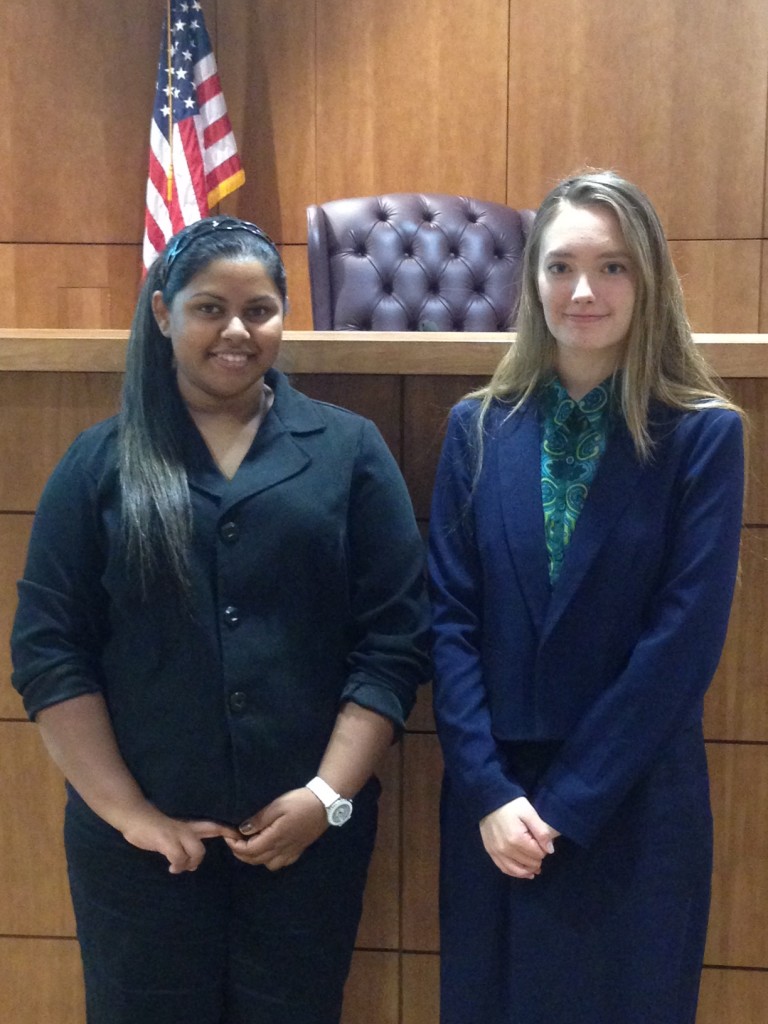
Uma Chatterjee (left) and Michelle McEvoy and (right).
Second Prize - Dante Barnes and Peter Kim, Wicomico HS, Wicomico, MD. Dante Barnes is a sophomore at Wicomico High School in Salisbury, Maryland. He is currently enrolled in AP government. He plans on joining the Army after high school.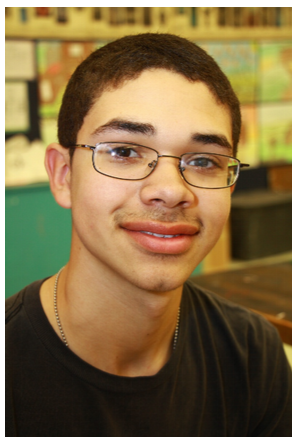
Peter Kim is a sophomore who attends Wicomico High School in Salisbury, Maryland. He was born in South Korea and likes to play must. He plans on going to college to become a doctor after high school.
